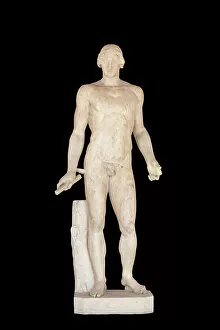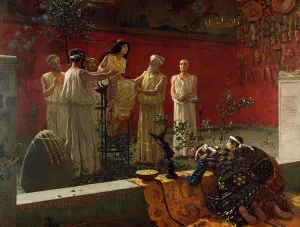Omphalos Collection
"Unveiling the Mysteries: Exploring the Omphalos through Time and Art" The ancient Turog Stone, dating back to the 3rd century BC
All Professionally Made to Order for Quick Shipping
"Unveiling the Mysteries: Exploring the Omphalos through Time and Art" The ancient Turog Stone, dating back to the 3rd century BC, stands as a testament to the enigmatic power of the omphalos. This sacred stone, believed to be at the center of the world, has captivated minds for centuries. In 1857, Philip Gosse's pterodactyl Bat-Lizards took flight across his canvas, intertwining with Apollo's marble statue. The juxtaposition of myth and prehistoric creatures highlights humanity's eternal fascination with divine beings and their connection to our earthly realm. A Carthaginian pendant from the 7th - 6th century BC showcases intricate goldwork depicting an omphalos. This exquisite piece serves as a reminder that different civilizations throughout history revered this symbol in various ways. An Attic red-figure krater transports us to Delphi where Orestes seeks solace as a suppliant at Apollo's shrine. The detailed artwork captures both Orestes' desperation and Apollo's divine presence, emphasizing how individuals turned to these sacred sites for guidance and redemption. "The Oracle, " an oil painting from 1880, portrays seekers eagerly awaiting answers from Delphi's prophetic priestess. Their hopes hang on her words whispered by Apollo himself—a testament to mankind’s ceaseless quest for knowledge and foresight. Another remarkable artifact is an Omphalos from Delphi dating back to the 2nd century BC. Crafted with precision and reverence, it embodies not only physical beauty but also spiritual significance—an object connecting mortals with gods. A libation bowl adorned with golden rosettes further exemplifies devotion towards this mystical symbol. Each petal represents prayers offered up in faith—testimony to humanity’s desire for communion with higher powers. Philip Gosse’s vibrant lithographs capture nature’s wonders alongside these ancient artifacts.












